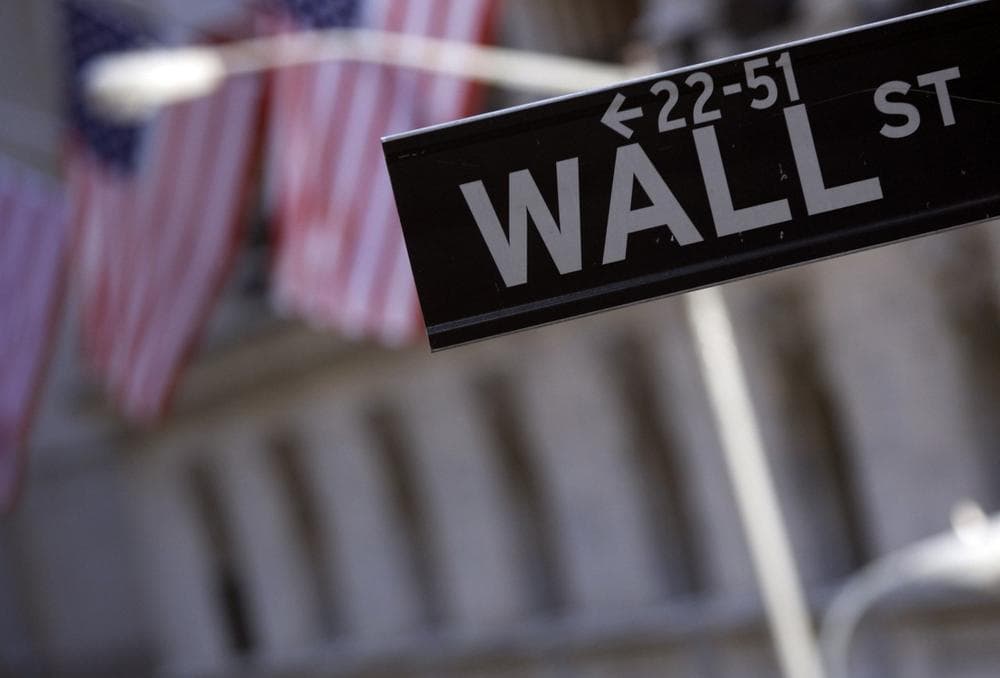Advertisement
How To Prevent The Next Global Financial Crisis
It was the financial world’s 9/11. First, on September 15, 2008, Lehman Brothers collapsed. Next came taxpayer bailouts, and efforts to trim the sails of the big six U.S. banks we'd previously considered “Too Big To Fail" (TBTF). The Dodd-Frank Act was meant to be cutting shears, but got watered down to the point that those banks have since grown in size and power, taking more financial risk than ever before.
Call it the Great American Stick-Up. But with those TBTF institutions back on top of their game, now is the time to consider ways to cut them down to a safer size.
The biggest banks and their unsafe risk-taking must be tamed. The Great American Stick-Up must end.
Unfortunately, we still haven’t learned the lessons of the Lehman debacle. In 2013, the risk that one or more of these TBTF banks could trigger another global financial crash is greater than ever before. The assets of the big six — JPMorgan, Bank of America, Citigroup, Wells Fargo, Goldman Sachs and Morgan Stanley — top $9.5 trillion, or two-thirds of domestic GDP and control over half of all customer deposits. These megabanks are holding the U.S. economy hostage. Emboldened by the knowledge that the government won’t let them fail, the big six have added incentive to gamble with depositor funds.
In 2008, Lehman Brothers and many other banks lost billions on risky derivative bets. Last year, JPMorgan, the country’s largest bank, lost over $6 billion to a single derivative trading strategy, was implicated in interest rate fixing, and involved in a multi-million dollar electricity price manipulation scheme. Bank of America, Citigroup, and others have also been called out for unseemly banking practices. Before and after the crisis, the biggest U.S. banks still seem to believe that placing out-sized bets or breaking laws remain within their purview.
Meantime, the multi-million dollar compensation packages that directly contributed to the unsafe activities that crippled the global economy and cost millions of jobs, are still very much intact.

But all is not lost. Since the crisis, banks have regained financial strength as measured in greater capital levels, increasing stock prices and growth in market capitalization. There is still time to correct the TBTF problem, protect the economy and swing the balance of power back towards taxpayers. Now is the time for policymakers to conduct surgery.
TBTF risk can be significantly reduced by reinstating the Glass-Steagall Act, the depression era legislation that, prior to its repeal in 1999, separated lower risk commercial banking activities from higher risk investment banking activities. If done correctly, Glass-Steagall 2.0 would force banks to choose between lower risk deposit and lending activities or higher risk derivatives and trading. Banks would either serve Main Street or Wall Street — but not both. Importantly, the privilege of FDIC insurance would only be extended to lower risk taking banks. Reenacting Glass-Steagall type reform would also incentivize banks to break themselves up without regulators having to make the cut first. Should banks remain over-sized, a natural break point at $500 billion in assets could then be applied. That is one-quarter the size of Bank of America.
Regulators and policymakers also need to address excessive compensation head on and follow the example of Switzerland and the U.K. by imposing aggressive caps on executive pay. The Federal Reserve Bank has provided guidance, but has not been forceful at mandating that risky compensation levels will not be tolerated.
Those opposed to breaking up the big banks say you can’t put the toothpaste back into the tube, noting the value large banks play in the $200 trillion global financial market. But the recent crisis showed that the safest banks, exercising the most prudence, were the regional, community banks and credit unions that stuck to taking in deposits and making loans. These institutions also better understood their customers and provided vital capital to small business owners that ultimately create the jobs needed to spur economic growth.
The future of U.S. banking is in the smaller banks. The biggest banks and their unsafe risk-taking must be tamed. The Great American Stick-Up must end.
Mark Williams is the author of “Uncontrolled Risk” about the fall of Lehman Brothers and the lessons learned (McGraw Hill, 2010).
Related: 5 Years After Financial Crisis, Are Big Banks Still A Threat?
This program aired on September 13, 2013. The audio for this program is not available.